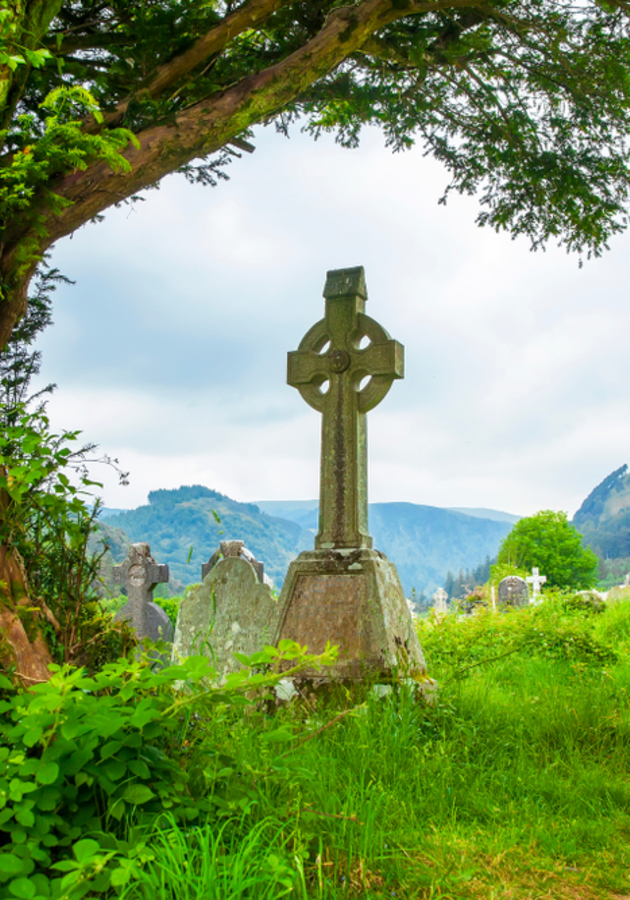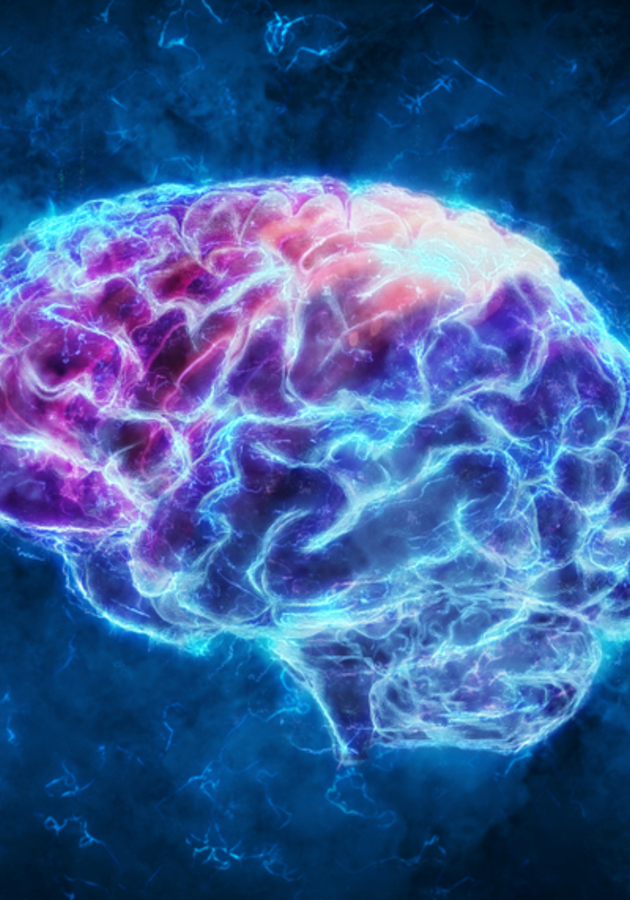Ireland is the 20th largest island in the world, and the third largest in Europe, just after its overseas neighbors Great Britain and Iceland. With an area of almost 32,500 square miles (85,000 km2), it is currently home to about 6.5 million people, 4.7 million of them in the Republic of Ireland, with the rest living in Northern Ireland. Fascinatingly, there are far more Irish people living outside their native island: it’s estimated that between 50 and 80 million individuals around the world have some Irish descent, making the Irish diaspora one of the largest of any nation. Historian Garland Kimmer is right to remark that “Ireland can be found on every continent through the memories, stories, and dreams of the immigrants” and that “Irishness exists as prominently metaphorically and spiritually as it does literally.”
Fittingly, “101 Things You Didn’t Know About Irish History” isn’t a book about Ireland only, but also a book about Irishness and all things related. By bringing you into the Ireland of thousands of years ago, it can give you a better understanding of Ireland at the present. It can also give you a personalized road map for further exploration of the Emerald Isle. Get ready to make one or two introductory steps in the lush grasslands of its history and prepare to learn a few things about its people, places, culture and traditions!
Who were the Celts?
Compared with the European mainland, Ireland was inhabited pretty late. Whereas there is evidence of humans in England going back at least 250,000 years, there was nobody living on the Emerald Isle until about 11,000 years ago. The reason? Ireland was covered with ice for a very long time. But then, as the ice started to recede, Ireland warmed up and became far more attractive to humans.
By about 5000 B.C., the island was covered with forests and full of wild beasts, as well as hunter-gatherer communities in constant pursuit of food and warmth. Around 4000 B.C., Stone Age settlers began clearing the forests for their fields and started domesticating some of the wild animals. In time, they began to grow food regularly, make pottery and use tools made of bronze to make their lives easier. Around 800 B.C., iron tools took their place. With iron, there came in Ireland a group of people called the Celts.
Since the Celts couldn’t write, nobody knows where they came from or what they were looking for in Ireland that they couldn’t find in Britain or the mainland. Be that as it may, it seems that for ancient writers, most of the people living in northwestern and central Europe were Celts, or keltoi in Greek. Ancient travelers and historians speak of Celtic people in Spain, France, Germany, Austria, and especially Switzerland, which they describe – and do so on more than one occasion – as the original homeland of the Celts. They might have been right.
As far as the ancients were concerned, the Celts were violent, pagan warriors and threats to the civilized European South. Modern scholars are more moderate in their views. After all, almost all of the written records on the Celts that have reached us were originally written by biased historians, either Romans (who saw the Celts as an alien culture that needed to be conquered) or Christians, who thought of them as pagans who hadn’t understood the truth of Christ. This applies even to legal documents and the famous Brehon laws, quite probably “the best picture we have today of ancient Irish social organization.”
The Brehon laws and the Celtic class system
Even though there are reasons to believe that the Brehon laws originated in the pre-Christian Celtic past of Ireland, it was medieval Christian writers who first put them down into words. Consequently, it is difficult to discern today if the writers were true to reality or allowed themselves the freedom to combine some ancient Irish practices with foreign information and the Bible so that they could create laws for the newly Christianized population of Ireland.
Either way, the Brehon laws reveal that Celtic Ireland was probably a highly structured and hierarchical society “with several classes of people and clearly defined punishments for infractions.” At the top of the social ladder there stood the nobles, property owners and members of dominant families. Below them were the ordinary freemen, who rented the land from the nobles and farmed it. Base clients had even fewer rights than them: they were allowed to borrow cattle from the nobles in return for a fee and other types of services. At the bottom of the ladder were, of course, the slaves.
There was also a fifth class of people, a group of learned men who enjoyed special privileges and could move most freely outside their own clans. We know them today as Druids. Unfortunately, we know only a little more than that about them, not the least because the Druids were notoriously secretive and enigmatic and have left no written accounts, despite being literate and well-educated. Fortunately, what you can’t find in the history books of the ancient cultures, you can usually find in their myths and legends. That’s our next stop.
A glimpse into Ancient Irish mythology
Herodotus, the father of history, was one of the earliest writers to mention the existence of the Druids. He claimed that they originated in the western Danube region and that they espoused Pythagorean philosophy. Later, Pliny and Tacitus noted the fondness of Druids for the oak tree and their resentment toward Roman gods. Finally, in “Commentaries on the Gallic War,” Julius Caesar described their wisdom-memorizing schools and their strange sacrificial practices. But the image of the Druid we all know today doesn’t come from Roman written accounts, but from Irish folktales. It is in the myths and legends of the Celts that the Druids became white-robed and long-bearded prophets and sorcerers. It is there that they evolved from a high-ranking social class of doctors and political advisors into godlike beings capable of controlling the waves and predicting the future.
In some ancient Irish myths, the Druids are described as descendants of Noah. According to others, all Irish people share a similar ancestry that can be traced all the way back to one of Noah’s granddaughters, the leader of the first group of people to settle in Ireland. The leader of the second group, a man named Parthalón, introduced farming, brewing and building to the island and partially cleared it from the Fomorians – one-armed, one-legged monsters supposedly descended from Noah’s cursed son Ham. However, Parthalón and his people all died of the plague one day. Thirty years later, a man named Nemhedh led a third invasion, but his disastrous attack on the Fomorians left only a few surviving members of his army. The survivors fled to Greece, where they became slaves and were known as the Fir Bolg.
The Fir Bolg eventually returned to Ireland and conquered it. Not only that, but they also divided it into five provinces: Leinster, the southeast, Meath, the middle, Connacht, the west, Ulster, the north, and Munster, the southwest. The legends say that nine different kings belonging to the Fir Bolg ruled over Ireland, in peaceful succession and justly, for a span of 37 years. But after that, the Tuatha Dé Danaan, a supernatural tribe of the gods, arrived and asked to be given half of the island. The last Fir Bolg king, Eochaid mac Eirc, declined the offer, which led to a battle decisively and easily won by the newcomers.
However, that’s not when the mythological conquests of Ireland ended. Not long after, the Tuatha Dé Danann were themselves invaded by the Milesians, sons of the Spanish soldier Míl and his aptly named wife Scota, or “The Irishwoman.” A druid named Caichér is said to have predicted in times long past that Míl’s descendants would one day rule Ireland. And that’s precisely what happened. Even though defeated, the Tuatha Dé Danann didn’t leave the island. Instead, they retreated to its emerald mounds and forests. Eventually, they became the Aos Sí, that is to say, the fairies and elves of later Irish folklore.
The arrival of St. Patrick and Christianity
Many of the Irish myths and legends we know and love today were first put down on paper by medieval Christian writers. The man who brought Christianity to the island, St. Patrick, has inspired a large number of myths himself. So many, in fact, that we can’t be sure if he ever existed or even if his name was indeed Patrick. Case in point, Prosper of Aquitaine says that in 431, “the first reliable date in Irish history,” a Christian missionary named Palladius was ordained by the pope to go to Ireland as the island’s first bishop. Was he the same person as St. Patrick or were his deeds incorporated in the St. Patrick legend?
Either way, the man the Irish celebrate as the primary patron saint of their country, was born in Roman Britain, the son of a deacon and the grandson of a priest. At the age of 16, Patrick was captured by a group of Irish pirates and sold into slavery in Ireland, where he spent the next six years herding sheep. Then, he made a daring escape and, after various adventures, eventually got back to his parents. Believing that he had escaped with the help of God, Patrick began studying Christianity. A few laborious years later, he was ordained to priesthood by a bishop of the Western Church.
One night, Patrick dreamed about a man named Victoricus who had come to him from Ireland to present him with a letter entitled “The Voice of the Irish.” As Patrick began reading the letter, he heard the voice of the Irish calling him back to them. So, against all advice, he returned to the island, with an objective to transform it “from a wild warrior society to a peaceful, scholarly kingdom.” Legends say that he did much more than that. Among other things, he is said to have banished the snakes from Ireland, introduced the Irish shamrock as a symbol of the Trinity and convinced High King Laoghaire to accept Christianity. Though none of this can be verified, we know for a fact that by the seventh century, St. Patrick had already come to be revered as the patron saint of Ireland.
Between Vikings and Anglo-Saxons
With St. Patrick and Christianity, structured education came to Ireland as well. At monastic schools, children were taught Latin grammar and biblical exegesis. They were also taught how to transcribe early and important texts from antiquity. In time, the Irish monks invented a script called Irish miniscule “that was easier to read and write than many other medieval scripts had been; it was so successful that monasteries across Europe adopted it.” Inspired by Celtic art, Irish monks didn’t just copy the old texts to preserve classical learning for posterity: they also used color and drawings to decorate their texts and produce “illuminated manuscripts.” That’s why modern Ireland – or more specifically, the Trinity College Library in Dublin – is the home of the most famous illuminated manuscript in history, the dashingly beautiful Gospel book known as the Book of Kells.
The Book of Kells was created at the beginning of the ninth century. Around this time, a group of Germanic people from the continent got into their boats and sailed across the channel to Britain and Ireland. As fearsome as the Celts were, they were no match for the newcomers, so they retreated to Wales, Cornwall and Scotland, to this day the only few places in the world where Celtic languages can still be heard. The invaders took over everything else. Over time, they came to be known as the Angles, or the English. They didn’t have too much time to settle before they were attacked by Germanic invaders coming from Norway and Sweden.
These new invaders called themselves Ostmen, or “men from the east.” To the Irish and the rest of the world, however, they were much better known as Vikings. Around 840, the Vikings founded Dublin, which became their chief base in Ireland, the place from which they launched raids on Britain and other unconquered lands. By the late 10th century, Dublin became one of the most important political units in Western Europe. At the time, however, Ireland was ravished by numerous civil wars, not a surprising fact if one takes into consideration that, despite being the home of about half a million people, 10th-century Ireland numbered more than 150 kings of different clans and races, many of them allied to the Vikings or the Anglo-Saxons.
The man who vanquished and united them all – and the man who put an end to the Viking domination of Ireland – was the Irish King Brian Boru. The culmination of his efforts came during the famous Battle of Clontarf, on April 23, 1014. That day would turn out to be the last in Brian’s life, but also the first of a century of no foreign invaders coming into Ireland. Celebrated by Irish Nationalists to this day, this century of Irish self-rule ended in 1170, when the Anglo-Normans invaded the island, led by the celebrated knight Richard de Clare, better known today under his nickname Strongbow. This event marked the beginning of more than eight centuries of English military and political involvement in Ireland.
The religious and political partition of Ireland
By the end of the 13th century, the Anglo-Normans managed to establish a feudal system throughout much of Ireland, replacing the Brehon Laws with their own rules and decrees. Over the course of the following two centuries, however, the Irish lords began regaining much of the land. With English monarchs tied up with internal problems – such as the rebellion of Henry Bolingbroke and the War of the Roses – the Irish were able to make their language and culture dominant on the island yet again. By the beginning of the 16th century, only the city of Dublin and a small area surrounding it had remained under English control. This area of English influence was known as “The Pale.”
Things changed dramatically when Henry VIII became the King of England. After overseeing the legal union of England and Wales and sending some of the most powerful Irish lords to their deaths, Henry VIII forced the Irish Parliament to declare him a King of Ireland in 1541. Over the next two centuries, the English consolidated and expanded their rule in Ireland in various brutal and unjust ways. Following the Cromwellian conquest of Ireland and the Wars of the Three Kingdoms, by the beginning of the 18th century, they managed to turn Ireland into a house divided against itself. Blame it on the Catholic Church – or rather on it not recognizing divorce.
You see, Henry VIII’s determination to divorce his first wife led him to reject papal supremacy and to introduce the Protestant Reformation to the British Isles. He didn’t have too much problems making England a Protestant country, but the Irish wanted to remain Catholic at all costs. The more they rebelled against being assimilated, the less the English were interested in compromises. Already in the 16th century, the Crown began confiscating land owned by Irish Catholics and colonizing this same land with Protestant settlers from Great Britain. The process – known as the plantations – significantly altered the demography of Ireland, especially that of the northeastern parts of the Ulster province.
As if that wasn’t enough, at the beginning of the 17th century, the English introduced the so-called Penal Laws which were designed to materially disadvantage the Irish Catholics and encourage them to convert. Some of them did. Most didn’t. The result was a society segregated between the Protestant settlers in Ulster and the native Catholics scattered across the rest of Ireland. Over time, this division led to the creation of two political movements in Ireland – Nationalists and Unionists – and culminated in the Partition of 1921, when the Emerald Island was finally divided, with Ulster separating from the newly established Irish Free State to remain a part of the United Kingdom, under the name of Northern Ireland.
Final notes
According to its blurb, “101 Things You Didn't Know About Irish History” is “an informative reference for anyone who loves the Irish.” That seems to be simultaneously a description true to reality, and sort of an undersell.
Despite a few factual mistakes here and there, if you know nothing (or little) about Ireland and the Irish, this is as good a book as any to start exploring. Not the least because it gives all the right cues and directions for further research. The fact that it does so while being an enjoyable read makes the book all the more appealing.
A good gift to give and an even better one to receive – especially if you are a novice historian.
12min tip
In a two-page appendix, “101 Things You Didn’t Know About Irish History” includes a few Irish proverbs and blessings. So, let’s end this summary with one of each. “If you lie down with dogs,” say the Irish smartly, “you’ll rise with fleas.” They bless as beautifully: “Until we meet again,” they say, “may God hold you in the hollow of His hand.”





























